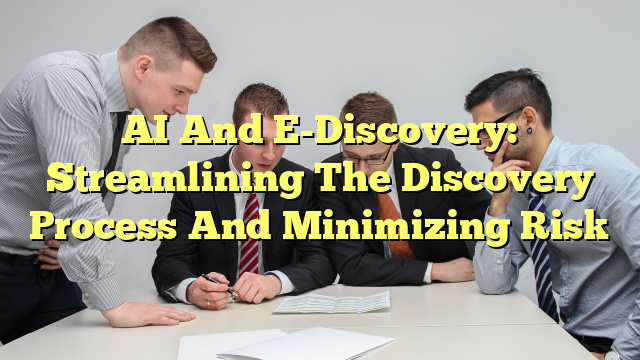Table of Contents
- What is AI in eDiscovery?
- What is the discovery process and how does eDiscovery fit into this process?
- What are the eDiscovery processes?
- What is eDiscovery and the eDiscovery reference model?
What is AI in eDiscovery?
Artificial Intelligence (AI) is a computer-based technology that is used to assist humans in making decisions. AI in eDiscovery is used to automate the discovery process, making it faster and more accurate. AI can help speed up the discovery process by finding documents that are relevant to the case, reducing the number of documents that have to be reviewed manually. AI can also help identify key documents that may be relevant to the case, such as emails and documents sent by witnesses or opposing parties.
What is the discovery process and how does eDiscovery fit into this process?
The discovery process is the process of gathering evidence that is relevant to a legal case. It involves collecting, reviewing, and analyzing documents, emails, videos, and other electronic data that could help prove or disprove the facts of a case. eDiscovery is the use of technology to facilitate the discovery process. It can include the use of software tools to search for and review relevant data, as well as the use of machine learning and AI to help identify and categorize relevant documents and other evidence.
What are the eDiscovery processes?
The eDiscovery process begins with the collection of data, which can be done electronically or manually. After the data is collected, it must be processed and organized into a format that can be easily reviewed. This includes organizing the data into digital documents and other forms, as well as filtering out irrelevant data. Once the data is organized, it must be reviewed and analyzed to determine which documents are relevant to the case. This can be done manually or with the assistance of AI.
What is eDiscovery and the eDiscovery reference model?
eDiscovery is the use of technology to facilitate the discovery process. The eDiscovery reference model is a framework for understanding how eDiscovery technology works. It consists of five stages: collection, analysis, production, review, and presentation. In each stage, the documents and data are processed, organized, and analyzed to determine which are relevant to the case. This can be done manually or with the assistance of AI.


AI has the potential to be a useful addition to the e-discovery process, but relying on technology alone to drive risk management doesn’t make sense. Perhaps teams should focus on developing more comprehensive protocols to ensure a comprehensive approach to risk management.
Interesting article but AI alone isn’t sufficient – manual review is also needed for accuracy. #ediscovery